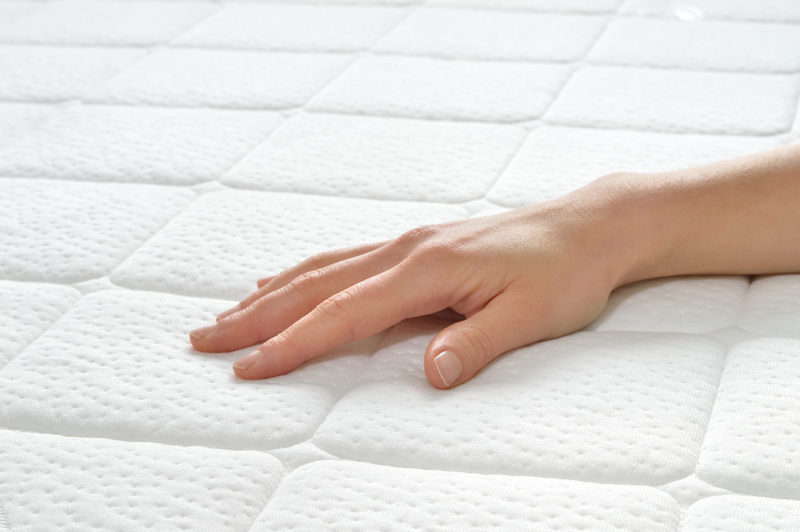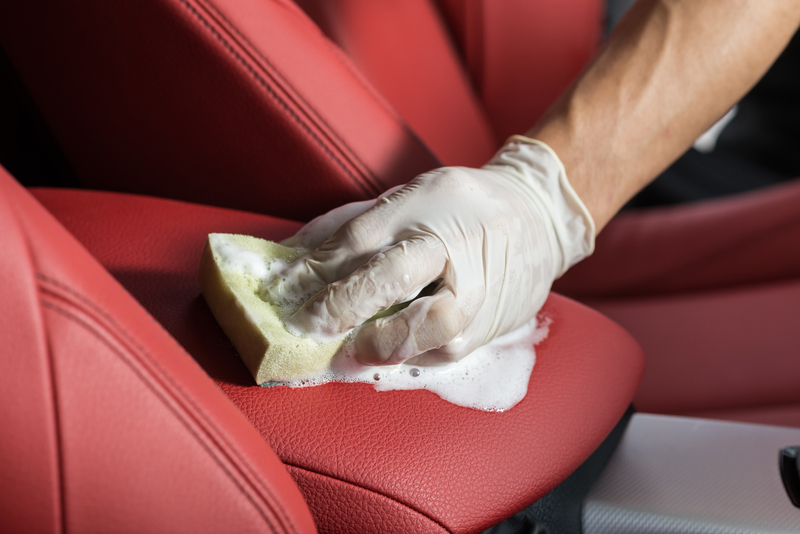The Velvet Curtain Care Manual: Washing Them to Preserve Their Allure
Velvet curtains possess an inherent sense of opulence, transforming a simple room into a stately haven. Their luxurious drape and soft sheen catch the eye, becoming the centerpiece of any decor. However, maintaining their plush appearance and ensuring their longevity demands special care and attention. If you own velvet drapes or velvet window dressings, this comprehensive guide--The Velvet Curtain Care Manual: Washing Them to Preserve Their Allure--is the essential resource you need.
Understanding Velvet: What Makes It Special?
Velvet is a unique fabric characterized by its dense pile--a layer of raised fibers that lend the material its signature softness and shimmer. This intricate construction, whether made from natural fibers like silk or cotton, or synthetic materials such as polyester, creates a stunning depth and richness. Yet, the same qualities that contribute to velvet's charm also make it sensitive to washing, vacuuming, and exposure to sunlight.
- Natural velvet: Typically made from silk or cotton, it's softer but more delicate and expensive.
- Synthetic velvet: Includes polyester, acetate, or a blend. Slightly more resilient and commonly used in home furnishings.
- Crushed or embossed velvet: Created for visual texture, requiring specific cleaning approaches to avoid damaging the pattern or pile.

Why Velvet Curtains Require Careful Cleaning
Velvet drapes are not just another window dressing. The nap of the fabric traps dust, pet hair, and odors, necessitating regular maintenance to preserve their rich allure. But washing or cleaning velvet is far from straightforward. Incorrect handling can result in crushed pile, color fading, watermarks, shrinkage, or even irreversible fabric damage. Therefore, it's crucial to understand the proper velvet curtain cleaning protocols before taking action.
The Risks of Improper Cleaning
- Crushed nap: Improper agitation can flatten velvet's plush surface, resulting in dullness and loss of texture.
- Color fading: Aggressive detergents or sunlight exposure can strip the dye from delicate fibers, diminishing their vibrancy.
- Streaks and water stains: Many velvet types are vulnerable to water marks, especially if allowed to air-dry unevenly.
- Shrinkage and distortion: Too much heat or moisture can warp the fabric's shape, making it difficult to hang evenly.
Routine Velvet Curtain Maintenance: Prevention is Key
The best way to prolong the life and beauty of your velvet curtains is through regular, gentle upkeep. Here's how:
Regular Dusting and Vacuuming
- Weekly dusting: Use a soft, clean brush or lint roller to gently lift dust and debris from the fabric's surface. Brushing should always follow the direction of the pile.
- Careful vacuuming: Attach a soft brush nozzle to your vacuum cleaner and use the lowest suction setting. Again, move in the direction of the velvet nap to avoid crushing the pile.
Immediate Stain Handling
- Act fast: Blot (do not rub) spills and stains with a clean, dry, undyed cloth to absorb as much moisture as possible.
- Spot treatment: Use a mild upholstery or velvet-specific cleaner, testing it first on an inconspicuous area to safeguard against discoloration.
How to Wash Velvet Curtains: Step-by-Step Guide
Washing velvet drapes is a delicate process that requires precision and patience. Depending on your curtain's material and manufacturer's care instructions, you may choose between dry cleaning and home washing. Most natural velvets (especially silk or cotton) should be dry cleaned, while some polyester or synthetic velvets may be washed gently at home. Always review the care label before proceeding.
When to Dry Clean Velvet Curtains
- Silk velvet: Always opt for professional dry cleaning.
- Cotton velvet: Dry cleaning is safest for pure cotton velvet, especially if lined.
- Antique or heavily embellished velvet drapes: Professional handling is a must to prevent damage.
Washing Synthetic Velvet at Home
For certain synthetic velvets, gentle hand washing can yield good results. Here's how:
- Shake off debris: Remove the curtains and gently shake to dislodge dust and loose particles.
- Pre-treat spots: Lightly dab stained areas with a velvet-appropriate cleaner. Avoid harsh scrubbing.
- Prepare a bath: Fill a tub or basin with cold or lukewarm water and add a small amount of mild, non-alkaline detergent (such as Woolite). Agitate to dissolve.
- Submerge and soak: Place the curtains in the solution, gently immersing them. Avoid wringing or twisting.
- Swish gently: Move the curtain through the water by hand, following the nap. Do not rub or scrub.
- Rinse thoroughly: Carefully drain the soapy water and refill the tub with fresh, cold water. Swish the curtains until all detergent is removed.
- Remove excess water: Lay the curtain flat on a clean towel, roll it up, and gently press out extra moisture. Never twist or wring velvet, as this can damage the fibers and leave markings.
Machine Washing: Proceed With Caution
- Only machine-wash if the label explicitly states it is safe for velvet.
- Use a mesh laundry bag to reduce friction.
- Select a cold water, delicate cycle with minimal spin.
- Opt for a gentle detergent specifically designed for delicate fabrics.
- Promptly remove curtains from the washer to reduce creasing and distortion.
Drying Velvet Curtains: Preserving the Pile
Proper drying is perhaps the most crucial step in velvet curtain care. Follow these key practices:
- Never tumble-dry: The heat and agitation will damage velvet's nap.
- Air drying is best: Lay the curtain on a flat surface over several clean towels and carefully reshape while damp. If space does not allow, drape it over a wide clothes drying rack, ensuring the fabric's weight is evenly distributed.
- Minimize direct sunlight: Prolonged exposure can fade and weaken fibers, so dry in a shaded, well-ventilated area.
- Speed up drying: Use a fan to circulate air, but avoid hairdryers or heaters directed at the curtains.
How to Restore Velvet's Plushness After Washing
- Once fully dry, gently brush the pile using a soft clothes brush or a specially designed velvet brush.
- Brush in the direction of the nap, which helps restore texture and sheen.
- For minor wrinkles, hang the curtains and let gravity do the work. Lightly steam from the reverse side, holding the steamer at least six inches away. Never press the steamer directly against the velvet.
Dealing With Stubborn Stains or Odors
If standard spot cleaning fails, consult a professional upholstery or drapery cleaner experienced with velvet window treatments. Home stain removers or harsh chemicals can react poorly with velvet, causing further staining or damage.
Seasonal Deep Cleaning & Maintenance Tips
Even with the best daily care, velvet curtains benefit from an annual deep cleaning to remove deeply embedded dust and restore their allure. Here are additional maintenance tips to keep them looking and feeling like new:
- Rotate curtains if possible to prevent uneven fading and pile wear from sunlight and repeated handling.
- Keep windows and curtain rods clean to prevent dust buildup from transferring to your drapes.
- Use a protective liner behind your velvet curtains to shield them from strong sun and condensation.
- Handle with clean hands to avoid transferring oils and dirt onto the nap.
Velvet Curtain Storage: Best Practices for Longevity
If you need to store your velvet drapes between seasons or during a move, follow these steps:
- Clean before storing to discourage moths and mildew.
- Roll, don't fold: Folded velvet is prone to deep creasing and pile crushing. If folding is necessary, pad the folds with acid-free tissue paper to cushion the fabric.
- Store in a breathable fabric bag rather than plastic to prevent condensation and allow air circulation.
- Keep in a cool, dry place away from sunlight or heat sources.

Frequently Asked Questions: Velvet Curtain Cleaning & Care
1. Can I iron my velvet curtains?
Direct ironing is not recommended. If you need to remove wrinkles, hang the curtains and use a handheld steamer on the reverse side, keeping it at least six inches away from the fabric.
2. Are all velvet curtains machine washable?
No. Always check the care label. Most natural velvets (silk, cotton) must be dry cleaned, while some synthetic velvets may permit gentle machine or hand washing.
3. How do I remove pet hair from my velvet drapes?
A lint roller, soft clothes brush, or rubber glove can gently lift hair from the pile without damaging the fabric.
4. My velvet curtains have lost their luster. What can I do?
Try brushing the nap in the right direction with a velvet brush or use a handheld steamer to rejuvenate any crushed spots. Consistent care and proper storage are key.
Conclusion: Long-Term Beauty Through Thoughtful Velvet Care
Velvet curtains are more than just window coverings--they're investments in your home's atmosphere, exuding warmth, luxury, and charm. Their magic lies in their texture and depth, but that very beauty requires a mindful maintenance routine. By following this Velvet Curtain Care Manual--from regular dusting and gentle washing to cautious drying and expert storage--you will ensure your drapes maintain their allure for years to come.
Remember, when in doubt, seek professional cleaning, especially for natural or vintage velvet. Your reward will be curtains that continue to elevate your space with their timeless, sumptuous beauty.